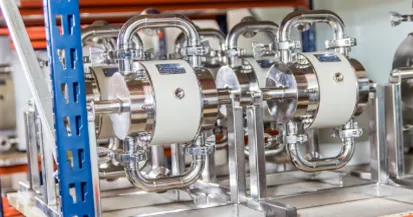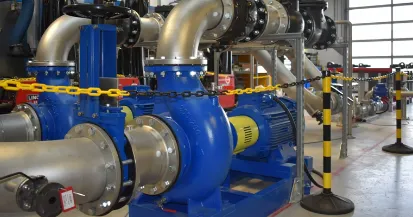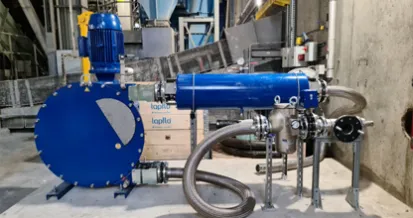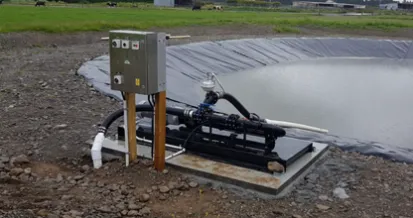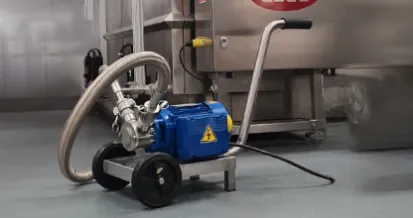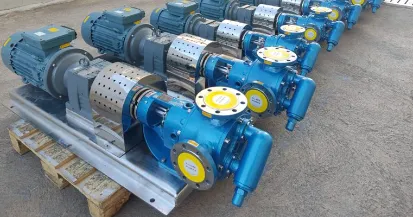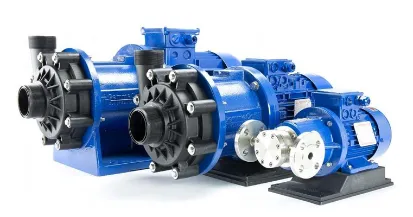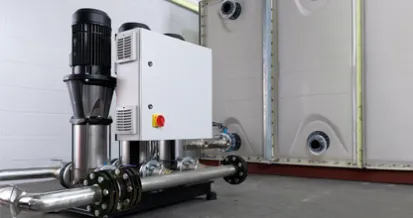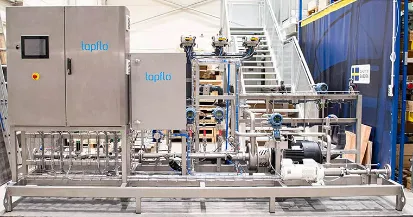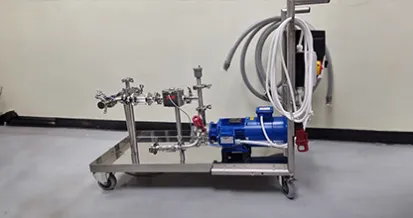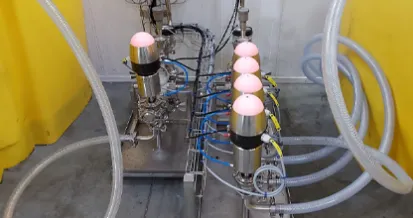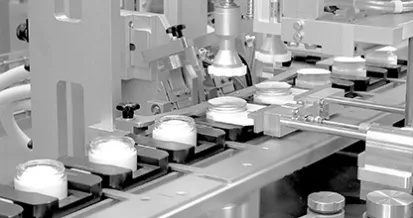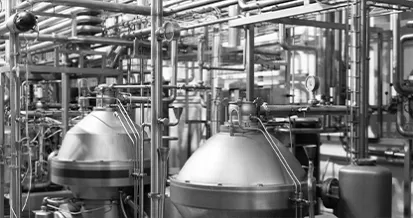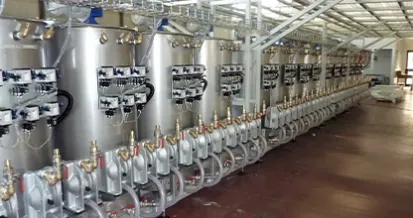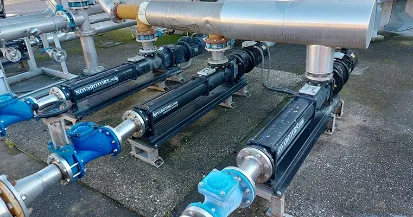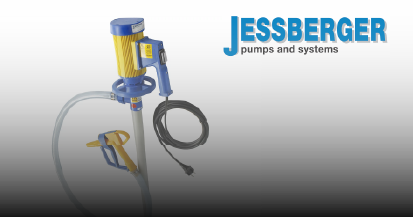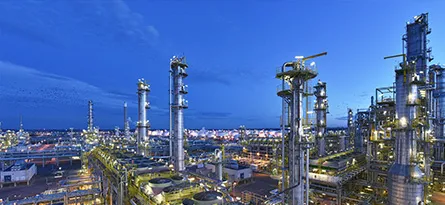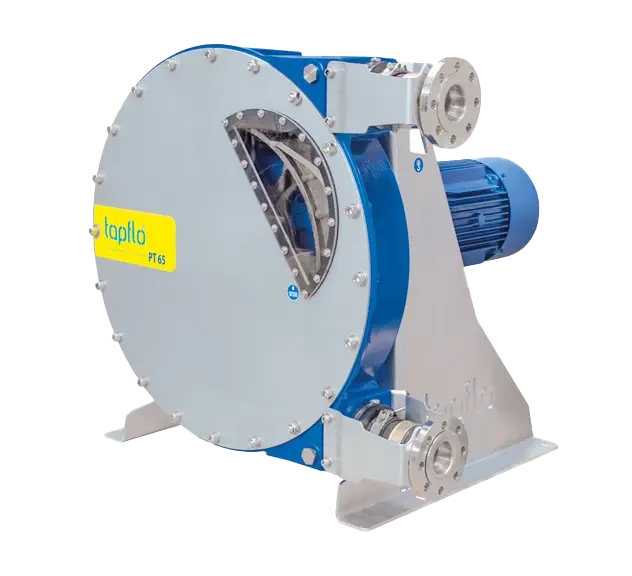Tapflo UK were asked to supply a Peristaltic Pump on a quick lead time to a customer who was looking to transfer digestate within their Anaerobic Digestion Plant. Find the solution below.
Anaerobic Digestion Plant Pump Solution
- Customer: Tapflo Distributor
- End-User: Anaerobic Digestion Plant
- Location: UK
- Enquiry Received: February 2014
- Order Placed: March 2014
- Order Dispatched: April 2014
Enquiry Details
Tapflo UK only works with the most trusted and reliable equipment and partners so when they were contacted by one of their distributors in the UK for the supply of a reliable and well-made Peristaltic Pump on a quick lead time they were only too happy to oblige. The distributor’s customer, an Anaerobic Digestion Plant had contacted them to assess the problems they were having with their digestate transfer pumps which were an immersible, progressing cavity pump, over 6 m in total length. The pump was proving problematic for the customer in a couple of ways: Firstly the pump was consistently clogging and running dry upon start-up and failing to deliver the required capacity (30 m³/hr) when the plant was operating at its heaviest solids load of 25-30%. Secondly, the end-user didn’t have suitable lifting equipment for the existing pump. Therefore, any time they needed to do any routine inspection or maintenance they needed to hire a crane to lift the pump in and out of the tank it was installed in and wait whilst the work was carried out. This resulted in costly and unnecessary maintenance costs which could be avoided.
Equipment Supplied
1 X PT-100 – Heavy Duty Peristaltic Pump
- Fluid: Organic Waste Sludge w/ Abrasive Solids in Suspension (25-30%)
- Capacity: 30 m³/hr
- Max Discharge Pressure: 5 Bar
- Required Suction Lift: 4-5 m
- Capable Suction Lift: 9 m
- Inlet / Outlet Connections: DN100 / PN16
- Stainless Steel Flanges Geared Motor: 15 kW / 1500 rpm / 3 Phase / 50 Hz / IP55 / Class F
- Output Speed: 36 rpm
- Body, Wheel, Pressing Shoes: Ductile Cast Iron GGG40
- Hose: High-Pressure Natural Rubber (20 Bar Max), Multi-Layered & Reinforced w/ Braided Polyamide (21.25 mm Thickness / 4 m Length)
- Frame: Painted Steel
- Flanges & Inserts: Stainless Steel
- Bolts & Nuts: Stainless Steel AISI 304
- Paint: Anti-Corrosion Coating, Blue, Primary and Final Polyurethane. Acry-Epoxy, 150 microns thickness.
Fitted Accessories
- PT-100-VAC Air Operated Vacuum System – enables increase suction lift capability on high viscosity and solids laden fluids Hose Rupture Detector (Suco Pressure Sensor)
Solution & Support Offered
Further to our distributor’s comprehensive initial site visit and report on the existing installation, the end-user was recommended to replace the existing pump with a Peristaltic Pump. These types of pumps have several unique features which were perfect in resolving the end-users issues with their existing unit. Peristaltic Pumps are Sealless and Leak Free! The mechanical seal is the weakest point on any sealed pump unit and is high wear and highly replaced element of any pump unit operating within the Anaerobic Digestion marketplace. Any rupture of the hose within a Peristaltic Pump is contained within the pump casing, therefore, avoiding messy leakages onto the installation. The pump can also be fitted with a hose rupture sensor and alarm to stop the pump in case of a rupture and signal the plant manager that there has been a failure and call for a hose replacement.
- Peristaltic Pumps are ideally suited for handling water like as well as high viscosity and solids laden fluids whilst maintaining pressure and delivering constant flow. Therefore, they are perfectly suited for digestate transfer and can adapt to changes in the process.
- Peristaltic Pumps are capable of running dry indefinitely. Running dry is a particularly prevalent problem within any process therefore this is a very useful benefit which cuts out costly downtime and spares costs affiliated with this issue. However, even though these types of pumps can run dry, it is inefficient for them to continue running whilst doing so. Tapflo UK can offer a variety of dry run protection devices to stop the pump in case of this eventuality and signal the plant operator to investigate and therefore save on unnecessary operating costs.
- Peristaltic Pumps can generate an almost near perfect vacuum and provide suction lifts of up to 9.8 m vertically. This means that the pump can be kept outside of the tank meaning easier and quicker inspection and maintenance and also avoiding unnecessary crane hire costs!
- The only wear part in a Peristaltic Pump is the hose therefore maintenance costs and downtime are also kept to a minimum and the maintenance procedure simplified as much as possible!
- Peristaltic Pumps are bi-directional (can be operated equally in both directions), a feature which can be taken advantage of in applications where there is a presence of suspended solids. The pump can be run in reverse on startup to dislodge any blockages and settlement within the pipework during periods of downtime.
- Peristaltic Pumps generally operate at a slower rotational speed to Progressing Cavity Pumps therefore the life of the hose is substantially longer. In this instance, the end-user went from replacing stators once or twice a month to replacing the hose on their Peristaltic Pump once a year!
Tapflo UK offered further assistance and support in conjunction with their distributor during the initial commissioning and installation of the Peristaltic Pump to ensure that the equipment was being used to best of its potential. On top of our extensive industrial and hygienic pump ranges, we are also capable of offering site visits, troubleshooting and system appraisal were requested to ensure that our customers and partners are getting the best out of their pumps and systems.
If you’re looking for a little more information on Tapflo’s Peristaltic Pump, read our Peristaltic Pump Guide.

